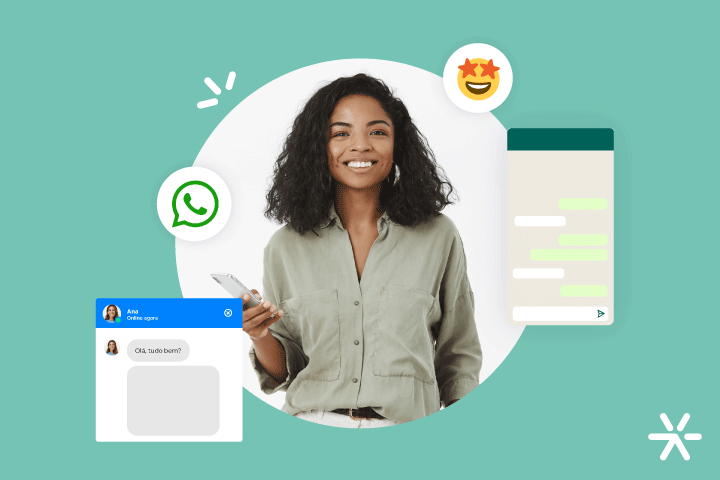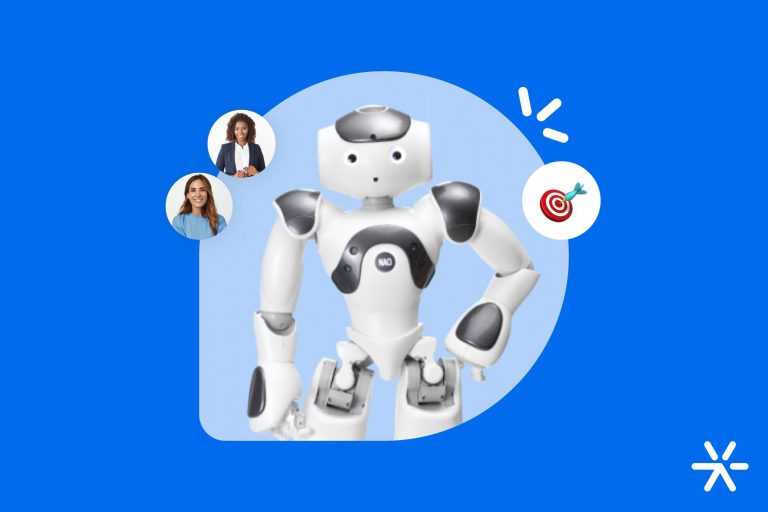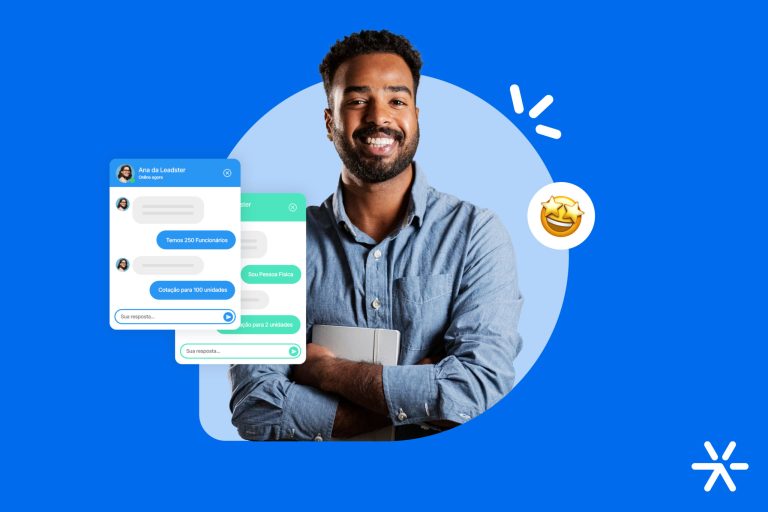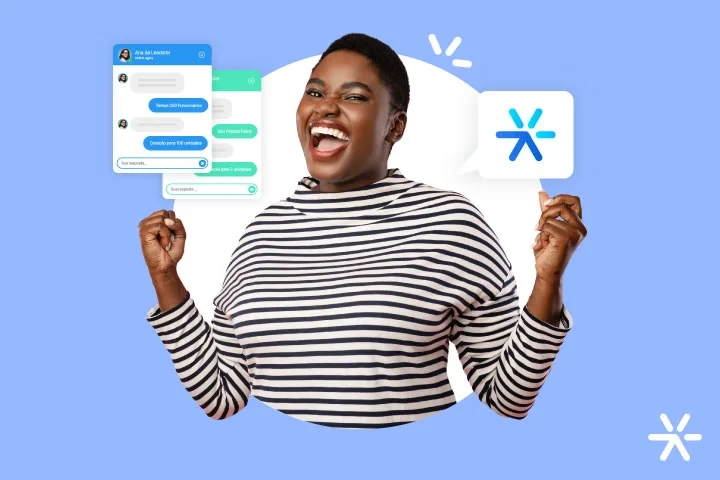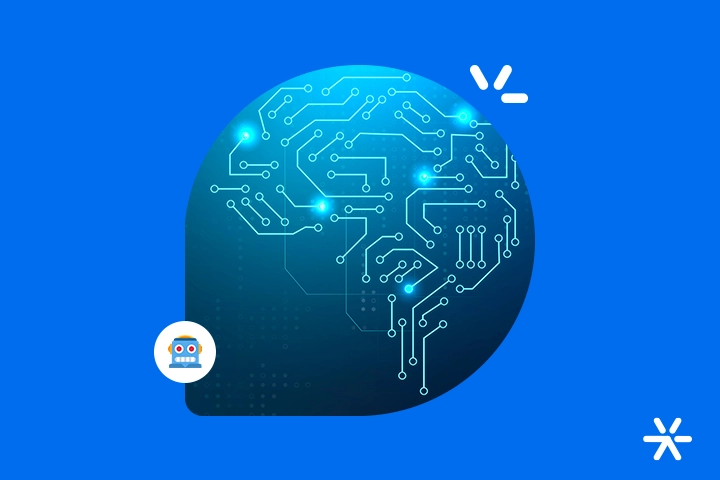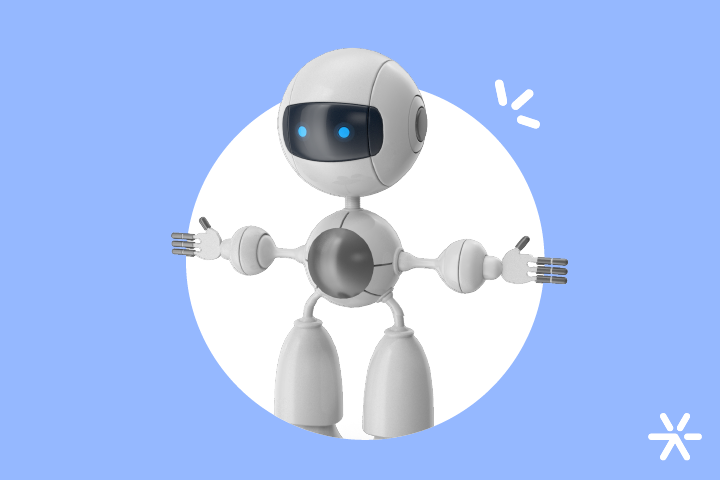[TOP 20] The Best Chatbots in the Market in 2024
Looking for the best conversational marketing option for your brand? You’ve come to the right place: We’ve put together a list of the top 25 chatbots in the market for 2024.
Virtual assistants and chatbots have gained prominence in recent years and are the choice of many companies for marketing, sales, customer service, and support across various communication channels with the public.
With that in mind, we’ve created this article: here’s a selection of the top 25 chatbots, categorized for your convenience.
This way, you’ll easily find options that suit your needs and channels.
Check out the full list and delve into each tool further in the post below.
What is a chatbot?
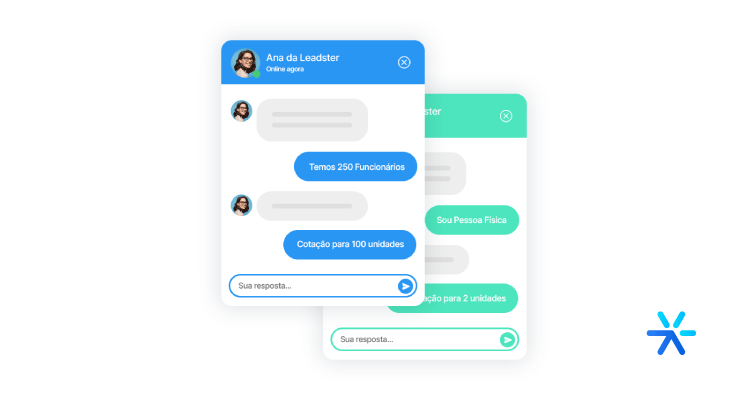
This term is used to refer to artificial intelligence systems that generate automated conversations, using predefined texts and scripts, between the system and consumers.
The tool simulates human interaction within a context that consumers are already familiar with: instant messaging.
The best chatbots can be used to answer questions, assist in sales processes, provide personalized content, and even process payments.
They are tools for communication, automation, and data storage.
However, as technology has evolved, this classic definition of chatbot has broadened. Today, there are more specialized chatbots.
For example, there’s Leadster. Our job is to use chatbot technology to help your website convert more leads.
What are the advantages of using a chatbot?
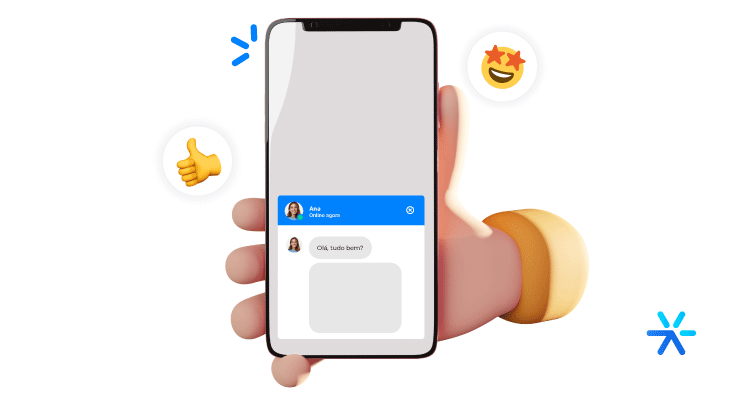
Whether on a website, software, social media, or even WhatsApp, consumers expect to find channels to interact with brands.
With planning, research, and market sensitivity, brands can use chatbots in these different environments to:
- Streamline and standardize customer service.
- Better understand each contact’s profile.
- Use technology as a tool to ease team workload.
- And explore it as part of a strategy for generating qualified leads.
Chatbots work better than static forms for lead generation, as they facilitate a fluid dialogue with consumers, enable large-scale reach, and offer personalized communication.
What are the types of chatbots?

Contrary to popular belief, chatbots come in various formats.
These tools are not limited to answering visitor inquiries about a product or service.
In fact, they serve many purposes such as:
- Service chatbot – designed to provide information or address questions about a product, service, or process;
- Marketing chatbot – capable of generating qualified leads by understanding consumer habits and interests. It also gathers relevant information for the sales department;
- Live chat – also known as virtual assistants, they blend customer service with sales. The main difference is that a human team is required for customer interaction;
- Rule-based chatbot – operates through predetermined commands and responses. Interactions are based on scripts;
- AI-based chatbot – in addition to simulating human intelligence, this type of chatbot may incorporate natural language processing (NLP) or machine learning technology;
- Option selection chatbot – offers choices to guide visitors through predefined commands, facilitating quick and accurate interactions;
- Contextual chatbot – primarily used in virtual assistant schemes like Siri, Alexa, and Google Assistant;
- Keyword recognition chatbot – as the name suggests, identifies specific pre-programmed words in the system and returns specific questions, answers, or directions to visitors accordingly;
- Code-based chatbot – built from scratch based on code and typically rendered through frameworks;
- DIY chatbots – created using robust frameworks with customized rules and criteria tailored to individual company needs.
How to choose a chatbot?

As we’ve seen together so far, there are many types of chatbots available on the market today.
Choosing the best one depends on your needs and the channels where you plan to implement the tool. One of the key factors to consider is the area of application.
Do you intend to use the chatbot for customer support, service, support, marketing, or sales?
Another relevant point when choosing is the channel where you want the chatbot to be available. You can use conversational marketing tools on websites, apps, WhatsApp, Messenger, etc.
I’ve detailed these three concerns you need to consider along with what you need to analyze. Let’s go through them together:
What do you need?
A chatbot for customer service will be quite different from one designed for lead generation. Although their operations are very similar, they are two completely different tools.
Understanding your need is the same as understanding what functionalities your tool should offer.
Among the best chatbots are those that offer a more comprehensive dashboard, for example. Ours here at Leadster will show you information such as conversion rate, number of leads generated, total lead quantity, etc.
In addition, the functionalities available in each option also vary. If this is a requirement for your company, this point will make a difference in the selection process.
Will your chatbot be programmed from scratch? Or do you prefer to adopt an existing platform?
🔎 Check this out: 10 Conversational Marketing Strategies to Use in 2024
What are the integrations and channels you need?
Each chatbot will have integrations related to its area of application and will offer channels in the same way.
For example: the Leadster chatbot integrates with RD Station, making lead generation processes easier: once generated, leads automatically enter the marketing automation.
Service chatbots will have other integrations — with WhatsApp, email providers, specific customer success tools, etc.
These integrations are absolutely necessary. Even if you don’t need one today, you will eventually.
How to determine the best cost-benefit ratio?
This is a fundamental point when choosing the best chatbot on the market. But where to start and how to determine what is a good cost-benefit and what is not?
It all depends on your needs. All these points we’ve discussed so far will converge when making the best choice.
Chatbots can be cheap or expensive depending on what you need. And since most of them work on the SaaS model — software as a service — there are several different plans for each need.
To get the best cost-benefit, you’ll need to make a checklist of everything you need in a chatbot. Which channels does it need to work on, which integrations does it need to make, which functionalities does it need to deliver.
With that in hand, you’ll be comparing tools and reviewing their ratings on SaaS product review sites like B2B Stack and Capterra.
Note: we’ve already done this in this article. Check out the evaluation of all platforms at the end 😉
After that, it’s just a matter of choosing what makes the most sense for your reality. Just don’t cut out functionalities because, even if it makes sense to remove them now, you may need them in the future, okay?
All these factors should be taken into account when choosing the best chatbot for your company, or you won’t get the benefit you’d like from the solution you’ve chosen.
Because functionalities, goals, and channels are so important for choosing the right platform, we’ve separated tips on the best chatbots by area.
Check out in detail all the chatbots from our selection below:
Top Marketing and Sales Chatbots to Use in 2023
Leadster
Leadster’s conversational marketing tool is designed for sales and marketing, catering to the needs of companies seeking such solutions, thereby boosting lead generation and site/landing page conversion rates.
Setting itself apart with an active approach, conversation personalization, A/B testing, a performance metrics dashboard, and lead qualification, the platform also integrates with over 200 other solutions including RD Station, PipeRun, Pluga, WordPress, Zapier, and Exact Sales.
Leadster offers a free account with the same features as the paid version, differing only in the monthly lead generation limit. You can test it for free for 14 days.
✨ B2B Stack Rating: 4.9/5
Octadesk
With chatbot solutions for websites, WhatsApp, Facebook, Instagram, and email, Octadesk offers tools focused on marketing, sales, and customer support.
The platform also allows automation of comments on Facebook and offers data analysis through a dashboard.
A free trial can be conducted to explore all functionalities. Features include:
- Online chat with humans;
- Chatbot creation;
- Ticket tracking;
- Chat-commerce for WhatsApp sales;
- Own smartphone app.
✨ B2B Stack Rating: 4.7/5
Drift
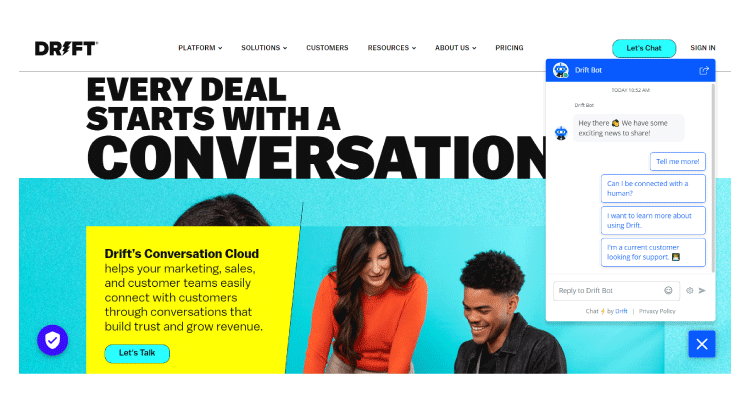
Drift is also a robust option for those looking to invest in chatbots focused on marketing and sales.
With a focus on conversion and applicability for websites, the platform offers customized experiences, sales pipeline, lead segmentation, lead analysis, reports, and more.
It can be integrated with other tools like Salesforce, Slack, Zendesk, HubSpot, Google Analytics, Zapier, Zoom, Tray, etc.
You can create a free trial account, but paid plan prices are only provided after contacting the sales team.
Features:
- Sales pipeline creation with Artificial Intelligence;
- Sales team management platform;
- AI-powered chatbot creation;
- Live chat with real people;
- Automatic lead qualification with Fastlane;
✨ B2B Stack Rating: 5/5
Landbot
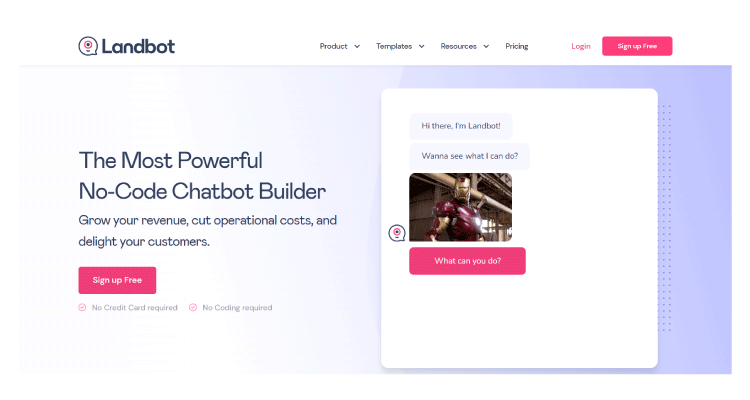
Chosen by major brands like Uber, LG, and L’Oreal, Landbot is one of the most robust platforms for chatbots in marketing and sales.
In addition to text-based conversations, the tool also allows the use of other media such as videos, images, and GIFs.
With options for websites, Facebook Messenger, and WhatsApp, the tool also allows human intervention in consumer chats.
This means that at any time, a staff member can take over the conversation or the chat can be directed to personal assistance.
Landbot offers a free version with many functionality limitations and only 100 chats per month for websites.
Paid and more complete plans start at 30 euros per month, according to need.
Some possible integrations (in paid plans) are: Mailchimp, Zapier, Slack, Google Analytics, Google Sheets, Sendgrid, and Salesforce.
Features:
- WhatsApp automation;
- Website chatbot;
- Customer service chatbot;
- Flexible embedding;
- Customizable design.
✨ Capterra Rating: 4.5/10
Best Customer Service and Support Chatbots to Use in 2023
Zendesk
As one of the market pioneers, Zendesk offers chatbots for websites, WhatsApp, Instagram, Facebook, email, and voice/phone.
The company does not offer a free version, but you can test it without cost on all plans, starting at $49 per month.
Features:
- No-code chatbot creation;
- Live chat support;
- Omnichannel deployment;
- Integrations with third-party systems;
- Intelligent routing;
- Built for CX (Customer Experience).
✨ B2B Stack Rating: 4.7/5
Zenvia
Zenvia focuses on creating consumer experiences.
In addition to chatbot solutions, it offers automation, flow management, and campaign triggering.
It supports various channels: WhatsApp, SMS, Voice/Phone, Instagram, Website, Facebook Messenger, and RCS (Rich Communication Services).
Free trials are available for only a few channels and functionalities, but not for chatbots.
Features:
- Chatbots for customer service or lead generation;
- Automatic lead distribution to sales teams;
- Integration with WhatsApp and social media;
- Integration with third-party websites;
- Management dashboard;
- Live chat support.
✨ Capterra Rating: 4.5/5

Intercom
Intercom provides conversational support solutions, conversational engagement, and conversational marketing.
Chats, focusing on websites, can also be applied to WhatsApp, Twitter, Facebook, and Instagram. You can create a free trial account, and the plans start at R$ 67 per month.
Features:
- Focus on customer support and CX (Customer Experience);
- Options for live chat;
- Creation and ticket tracking;
- Dashboard integrating all your digital marketing metrics;
- AI support.
✨ B2B Stack Rating: 4.5/5
Best WhatsApp Chatbots in 2023
Botsify

Botsify is the choice of major market players such as Spotify, Toyota, Unilever, and WHO for chatbots for Facebook, Instagram, websites, SMS, and WhatsApp, with a focus on the latter channel.
With data storage features and the possibility of multimedia messages, the tool easily integrates with various plugins and platforms such as Zapier, Slack, Google tools, and much more.
You can explore Botsify’s free trial for 14 days, and paid plans start at $49 per month.
Features:
- Chatbot for the website;
- Focus on customer service;
- Chatbot for all social networks;
- Chatbot for WhatsApp.
✨ B2B Stack Rating: no reviews yet
Neoway
Another top option for those who want a chatbot for WhatsApp is Neoway, which combines automated conversations with Big Data analytics.
The tool analyzes, segments, and qualifies leads, as it offers, in addition to the chatbot, functionalities designed for marketing and analytics.
Focusing on WhatsApp chat, Neoway also offers possibilities for websites, Twitter, Facebook, and Instagram.
However, the platform does not offer any free trial or simplified free profile.
To know the subscription prices, it is necessary to contact the brand’s commercial team.
Features:
- No-code chatbot creation;
- Integration with other platforms;
- Conversation classification by Big Data;
- Chatbot for WhatsApp.
✨ B2B Stack Rating: 4.6/5
Best chatbots for Facebook Messenger, Telegram, Skype, and other channels in 2023
ManyChat
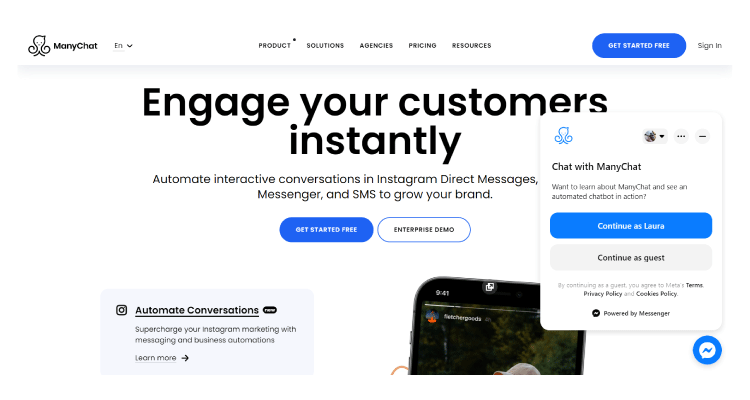
ManyChat offers a friendly interface where you can create your bot or customize templates provided by the platform.
The tool was designed especially for Facebook Messenger, so it may be the best option if you are looking for a chatbot for Instagram and Facebook.
With marketing, sales, and customer support functionalities, it can be started with a more basic free version, with only 2 sequences of questions, limited channels (Instagram, Facebook, and WhatsApp in beta version), and also a limit of 1,000 contacts.
The paid plan, with no limits and more functionalities, starts at $15 per month.
ManyChat also offers SMS and email response possibilities, with payment according to usage, in addition to the monthly fee.
The tool also offers integration possibilities with other platforms such as MailChimp, Hubspot, Google Sheets, and Zapier.
Features:
- Chatbot for WhatsApp;
- Chatbot for social networks;
- Chatbot for email;
- Integrations with other tools.
Chatfuel
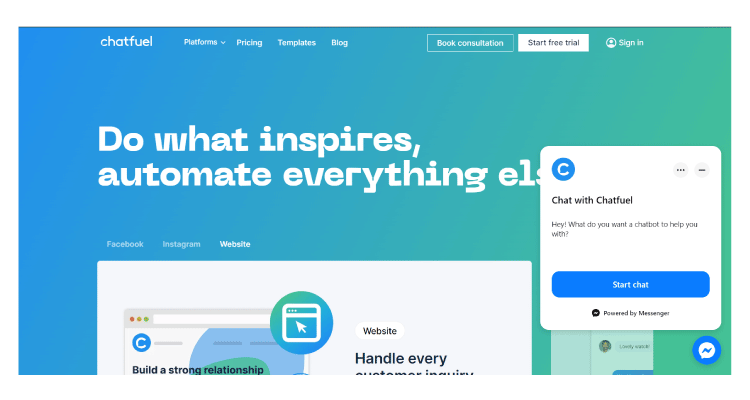
Chatfuel is also an option for Facebook, Instagram, and Telegram, although the focus and most of the functionalities are on the first two mentioned social networks.
With simple and fast creation, without the use of code, and unlimited question and answer flows, the platform stands out for offering features such as lead segmentation, automatic responses to Facebook comments, and the possibility of linking Facebook Ads to the chatbot, a differential for lead qualification and conversion.
The trial version is free for up to 50 users/conversations, and paid plans start at R$ 59.99, with a fixed cost per chat, with plans increasing according to the volume of conversations and functionalities provided.
Features:
- Chatbot for WhatsApp;
- Integrations with other tools.
Customers.ai

Formerly ChattyPeople, acquired by Mobile Monkey and now Customers.ai, this chatbot offers options for automated conversations for Facebook, Instagram, Skype, website, and SMS.
Built on Machine Learning, it promises fluid conversations with a greater simulation of human contact. It also has data storage functions for analysis and reporting.
Integrations with other tools can be done via API or Zapier, making it possible to connect Mobile Monkey with applications such as Google Sheets, Google Analytics, MailChimp, Hubspot, Zoom, Slack, etc.
You can explore a free trial of the platform, but the subscription prices are only disclosed after contacting commercial support.
Features:
- Chatbot for WhatsApp;
- Integrations with other tools;
Best Chatbots with Artificial Intelligence
Well, some of the chatbots we’ve seen so far are already inaugurating functionalities with Artificial Intelligence.
But the uses of AI are so broad that it is sometimes difficult to understand how exactly these tools use it.
Is it in the article? Is it in lead organization? Is it with intelligent call suggestions?
I have separated here in this final part of the article a “catch-all” list with 10 AI chatbots. They are not just for customer service or just for generating leads — if it has Artificial Intelligence, it’s worth mentioning!
Oh, Leadster also uses ChatGPT. Stay with me because before the article ends, we’ll talk more about this feature.
But for now, let’s get to know 10 other chatbot platforms that are already using Artificial Intelligence — mainly ChatGPT 3.5 and ChatGPT 4 — to convert leads and assist in customer service.
Starting:
Salesforce Einstein GPT
Artificial Intelligence has inaugurated a true space race in the style of the 60s, USA vs. USSR, in the world of digital marketing.
The world of chatbots is also buzzing with ChatGPT. Salesforce, a leader in the SaaS CRM segment, is also taking its first steps towards total customer service automation with AI.
Einstein GPT is the first step. However, I need to make a quick note here. Einstein is not a chatbot that uses ChatGPT to converse with customers and leads.
In fact, the technology of Einstein GPT helps you with insights and analytics, as well as offering you the possibility to operate the CRM through conversations.
For example: instead of building a Landing Page the traditional way, block by block in your preferred tool, you can build it by asking ChatGPT.
The same goes for chatbots. Salesforce offers the possibility for you to create chatbots and flows, but now Einstein allows you to do all this in a conversational way.
So, although Einstein still does not use ChatGPT technology to converse directly with customers like a human would, it still uses it in various related features.
Watch the video below to better understand its operation:
Features:
- Auto-generated sales tasks;
- Automatically writes emails;
- Writes response suggestions for customers;
- Delivers customer insights directly to Slack;
- Produces copy for posts and simple articles for the blog;
- Automatically generates success cases;
- Multi-language support;
- No rating on B2B Stack and Capterra.
Ada
Today, the main steps taken in the creation of chatbots are concentrated in customer service, support, and CX.
Leadster, for example, is one of the only chatbot platforms for lead generation that actively uses ChatGPT for smart call recommendations.
Ada follows a similar pattern. By integrating ChatGPT directly into the conversation, the platform can already offer some responses made directly by the AI.
All of this, of course, stems from a long process of entity registration and Artificial Intelligence training.
For example: if someone asks, “Can you send me a second copy of invoice X, please?” the chatbot can respond on its own using ChatGPT, but you will need to teach it what an invoice is and what a second copy is.
Additionally, it is essential to integrate the tool technically with your CRM so it can identify the user and the specific invoice they are requesting.
The results are still quite sparse and do not allow for a deeper analysis of what the tool can deliver, but the promise is that its use will become simpler and more intuitive as the AI advances.
Features:
- AI customer service agent;
- Possibility to continue training the AI with more material;
- No-code algorithmic programming;
- Custom analytics;
- Multi-language support;
- No rating on B2B Stack and Capterra.
Boost.ai

Boost.ai works in a very similar way to Ada’s AI chatbot but with a difference: it also allows for configurations for conversations with your own team.
Boost connects to both your CRMs and team meeting and chat platforms like Teams and Slack.
In terms of public service, its operation is quite similar to Ada and any other current chatbot that uses ChatGPT.
You will need to train the AI with the requests your customers need to be resolved, registering entities and making integrations so the AI can better understand what your customer is asking for — and who your customer is.
Features:
- No-code algorithmic programming;
- Subsequent AI training;
- Integrations to create chatbots in Slack and Teams;
- Multi-language support;
- Capterra rating: 4.8/5.
Zowie
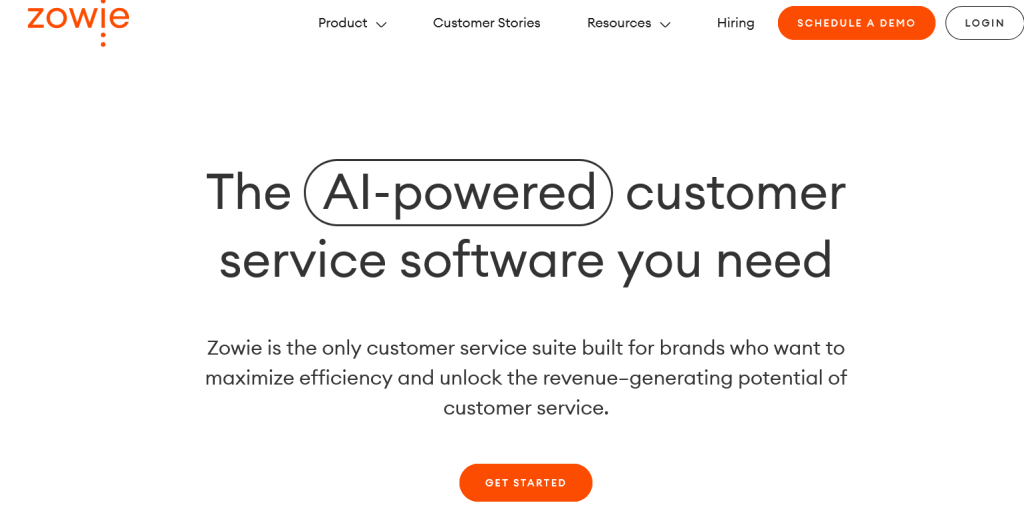
It is worth mentioning that all these AI platforms we are seeing are also chatbot platforms with all the features we have seen throughout the article. All of them.
The only difference is AI functionalities, which are growing and becoming absolutely popular through this learning model.
Another interesting point to mention is that Zowie and all the others mentioned in this topic can analyze past interactions with your users, ensuring an extra form of training for Machine Learning.
In other words, Zowie also offers similar features to the items analyzed: personalized service by AI through its prior training. And generative AI, ChatGPT itself, which means it can provide customer service independently.
Features:
- Proprietary user intent recognition system;
- Customer profile with CRM integrations;
- Feedback analysis and improvement suggestions;
- More than 175 languages;
- Customized copy according to the customer’s history;
22. Zapier AI Chatbot
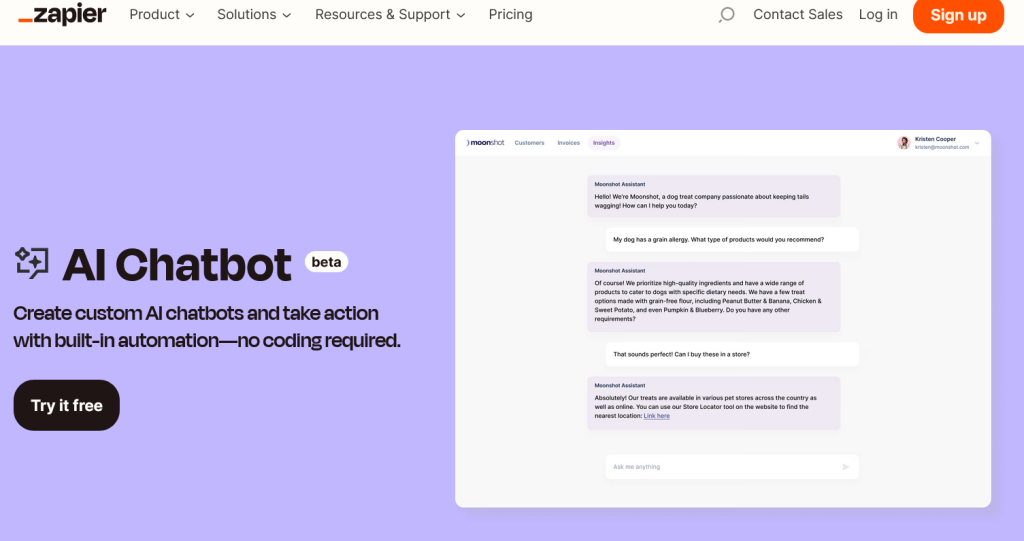
Even Zapier is joining the AI arms race!
Known for performing miracles in integrating completely different applications, Zapier is now entering the AI world with its new customer service-focused chatbot.
Its operation is also quite similar to what we have seen so far. It can connect to your knowledge bases, understanding what you work with and who your customers are.
But this, as we have seen, is just the first step. You will also register entities and teach the AI some expressions and words it might not know, improving its efficiency every day.
Features:
- No-code algorithmic programming;
- Connections with more than 6000 systems;
- Automatic actions with marketing platforms;
- Link sharing;
- Free templates;
ChatSpot
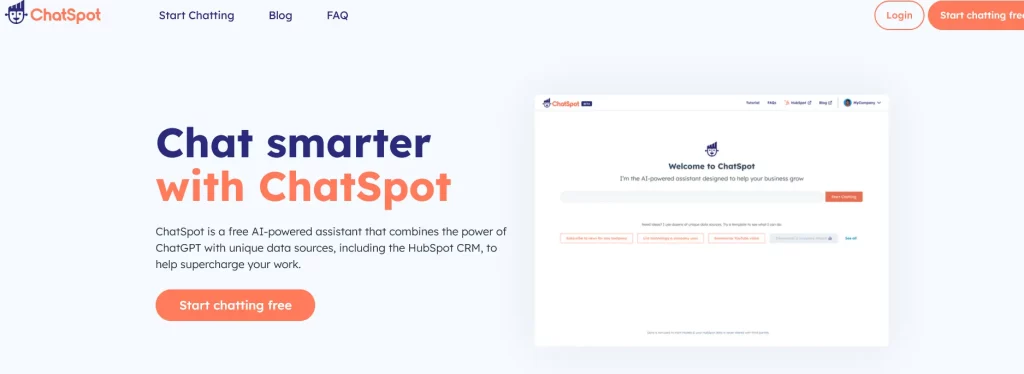
ChatSpot is HubSpot’s AI chatbot, which is also diving into the world of Artificial Intelligence.
This case is the same as Salesforce Einstein GPT. ChatSpot does not operate in Conversational Marketing directly.
It is a conversational marketing and sales tool. Its main purpose is to bring insights into your daily activities based on information connected to the platform through integrations.
It is also possible to have customized responses for emails, for example, based on the interactions your lead had with you. All within the HubSpot platform.
It is worth testing for those who already work with HubSpot and want some extra features. But those looking for a true artificial intelligence chatbot will not find it here in ChatSpot, unfortunately.
Features:
- AI content creation for articles and images;
- Keyword analysis;
- Possibility to train the assistant;
Lyro
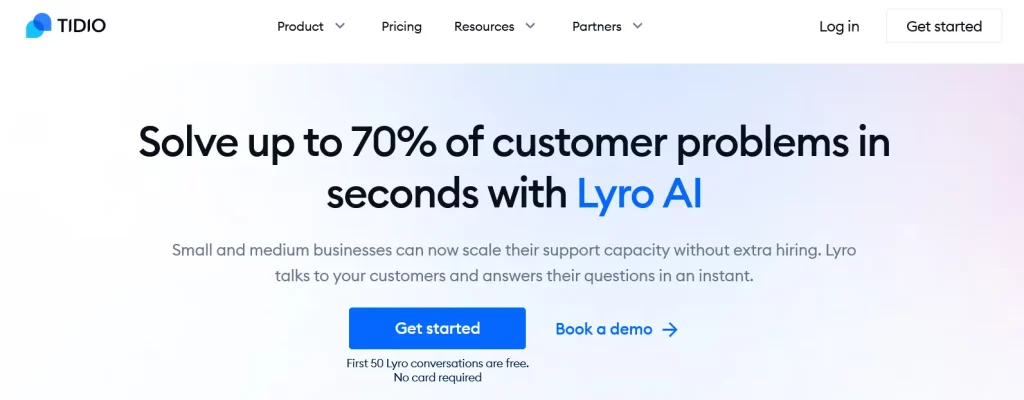
Lyro is another case of customer service chatbots using Artificial Intelligence and Machine Learning.
By the way, a little more about Machine Learning itself. What we are describing here — the ability to learn and the ability to continue learning on its own with interactions — is the classic definition of ML.
In the case of Lyro, the step-by-step implementation is simple:
- Installation and configuration;
- Tool crawl through all your support content;
- Start of personalized responses for your customers;
- Continuous learning from Machine Learning.
Lyro guarantees a maximum response time of 6 seconds for its AI chatbot and integrates with the vast majority of marketing platforms and CRMs on the market.
Features:
- No-code algorithmic programming;
- Virtual customer service agent;
- Integrations with CRMs and marketing platforms;
- Training with your support material;
LivePerson
LivePerson offers everything we have discussed so far and goes a bit further, with its feature of assisting human agents in customer service.
This feature is interesting because it provides personalized responses at the time of service. The agent just needs to click on the option that appears to select it and provide the response.
This ends up being very cool because most of the features we have analyzed so far focus on customer service without human involvement, and we know this is sometimes even unfeasible for many businesses, especially the more sensitive ones.
So, LivePerson was the only platform analyzed so far that does not ignore the reality of companies that will not stop having human attendants because of the chatbot. It helps the team make service simpler and faster.
Features:
- AI only for the agent;
- Integrations with CRM and marketing platforms;
- AI training with content;
- Capterra rating: 4.4/5.
The best chatbots on the market can be used across different channels to cover various objectives and become incredible tools for your strategy.
Now, just analyze which options are most interesting for you, test them, and decide on the one that will enhance your results!
If you want to try Leadster’s chatbot for free for 14 days, just click here!


